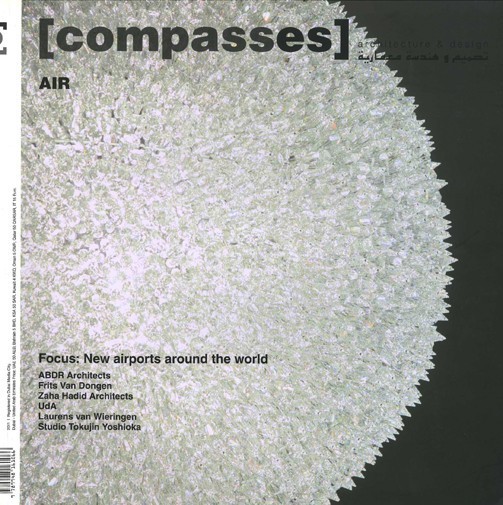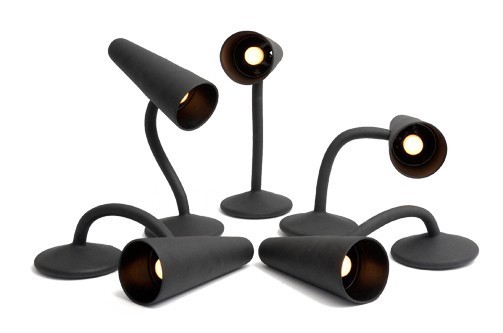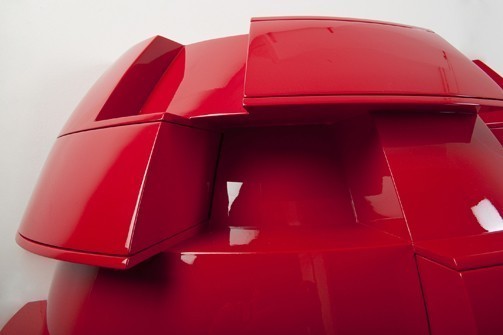Take some broken toys and a set of building
blocks, no matter what their colours. Now try to invent another game, make of this unique mix an unexpected fruit of your fantasy, as a cook would do by combining various ingredients to exalt new tastes. Thus as a real chef must be perfectly aware of a single flavour when matching different spices
to whet your appetite, a designer must own those necessary skills to trigger particular visions and tickle your imagination.
Be that as it may, the Dutch designer Laurens van Wieringen knows the rules to accomplish all of this: “Nevertheless, sometimes you have to come up with a new game in order to create new rules”.
Designing products is not only a pleasant game
for him, but also an entire process, where experimentation with materials is the means to fulfil
a new task, a new use and a new touch. Holding
one of his extravagant items is the only way to reveal the illusion of your perceptions. In occasion of the forthcoming Salone del Mobile in Milan, as part of the “Ventura Lambrate event”, Laurens will show his most recent furniture whose remarkable innovation vibrates in all his deceptively beautiful works.
M.E.F.: I have often heard Dutch designers
claim that they want to “mislead people” with their creations. Is this typical of a new design philosophy, or is it something that has to do with the “Dutch” footprint?
L.v.W.: I think it is good to trick people. Design is not just a product but also a way to let people experience other possibilities. Let’s take for instance my “5 x 7 vase”. If you look at it, you have the feeling that it might be in ceramic, instead when you touch it,
you realize that it is made with rubber and with
a special coating precisely simulating ceramic.
So what I mean is that you have to get through
new experimentation to obtain a new “feeling” for materials, a new aesthetic or a new expression. My “Mixed” plate is made from recycled plastic: there is a toy and a toothbrush in it! Recycling waste can be also a way to explore new potentials. Of course it is a lengthy process before the manufactured product is completely created.
M.E.F.: You studied “3D Design” at the Arnhem Institute of Art, moving on to the Royal College of Art in London where you earned a Master degree in “Product Design”. How did both important educations form the designer you are now?
L.v.W.: In the Arnhem Institute they give you a very open-minded education. Therefore, after two years, students have very clear ideas and a good basis; they are definitively aware of what they want to achieve. At that time, I had already decided to continue my studies at the Royal College of Art in London, which is a very professional school. Ron Arad was my professor during my time there. It was very inspiring to me and I am very grateful to both institutes for the designer I am now.
M.E.F.: Your “drive” and “motivation” are two specific facets of your “dynamic design”. Can you tell us more about that?
L.v.W.: As a designer you need to be opportunist, positive and hopeful. All these three characteristics are very useful to me, because they give the right push to see things in a different way. As a matter of fact, what I really want is to show customers how new products can have alternative aspects.
M.E.F.: In many of your objects I have noticed
a different application of materials to existing products: for example a special foam used for a children’s rug and your “Softy” table lamp, which allows it to be flexible. This allows you to give new potentials either to materials or to items of furniture. It seems you took a step forward in the concept of use: what was the process for such an achievement?
L.v.W.: Misleading is not the point. It is rather “to
add a new layer”. You see, if you would have not touched the Softy lamp you might have intuitively thought it was made with felt. Instead we have applied a special layer to the rubber to give the lamp an original appeal. It is a completely crazy project and, I have to admit, it was even amazing for me
to see what its effect would have been. It seems unbelievable sometimes to realise how clients can be intrigued by certain projects.
However when I am working on something, I discover as well. The results are a surprise for me too. So I am able to learn through the entire process of designing. In the Bar Florian, for example, we tried to achieve a particular atmosphere with the lights. But if you do not come closer to the counter you would not notice that the lamps were just rubber! That was a process I was extremely amazed to achieve. In the same project we also covered a wall with fitted carpeting. I would say that it was quite unusual, but you know that playing with materials can determine other impressions, effects and feelings. Sometimes when you wear a sweater inside out you discover that it is more beautiful inside than outside… This is what we did in the bar: similar to holding a box, we took our room with a carpet on the floor and then we rotated it to see what would happen!
M.E.F.: Many of your product’s shapes derive from pure volumes that you split, break up or cut such as your “Furniture Ball” and your “Belly Cabinet”, where you play with a sphere. Instead in the “Carpet” as well as in the “No kidding” shop you obtain irregular surfaces using different sized parallelepipeds to create a certain pixelated effect or other forms. Are they both the result
of the investigation of pure volumes, or is this a personal interpretation of form?
L.v.W.: I think a little bit of both. I have been always interested in architecture; to use pure volumes people can be related to. At the same time it is also charming to combine pure forms, as the Italian architects during Renaissance were able to do. It brings emotions, surely!




